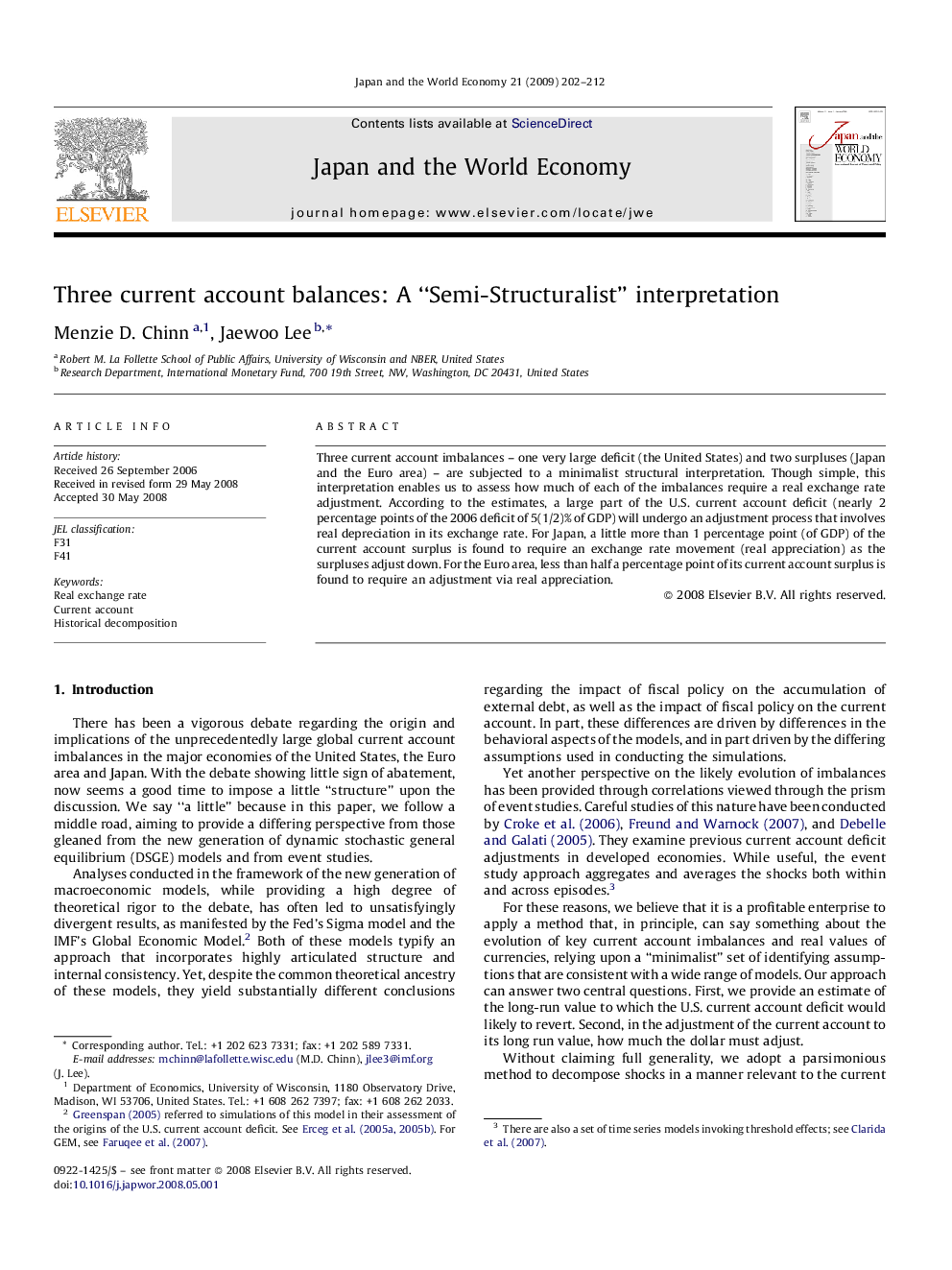| Article ID | Journal | Published Year | Pages | File Type |
|---|---|---|---|---|
| 5086357 | Japan and the World Economy | 2009 | 11 Pages |
Three current account imbalances - one very large deficit (the United States) and two surpluses (Japan and the Euro area) - are subjected to a minimalist structural interpretation. Though simple, this interpretation enables us to assess how much of each of the imbalances require a real exchange rate adjustment. According to the estimates, a large part of the U.S. current account deficit (nearly 2 percentage points of the 2006 deficit of 5(1/2)% of GDP) will undergo an adjustment process that involves real depreciation in its exchange rate. For Japan, a little more than 1 percentage point (of GDP) of the current account surplus is found to require an exchange rate movement (real appreciation) as the surpluses adjust down. For the Euro area, less than half a percentage point of its current account surplus is found to require an adjustment via real appreciation.
